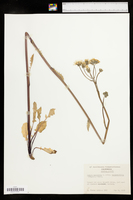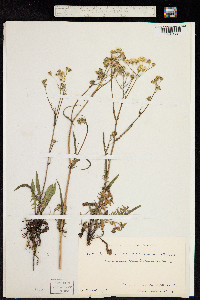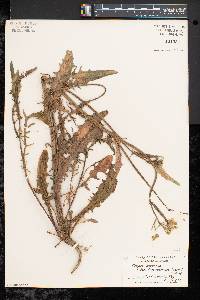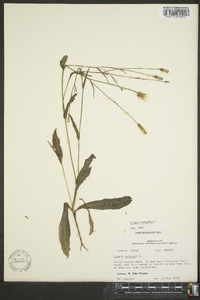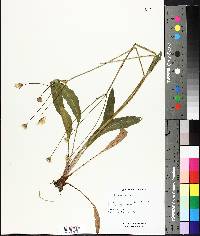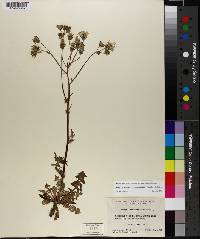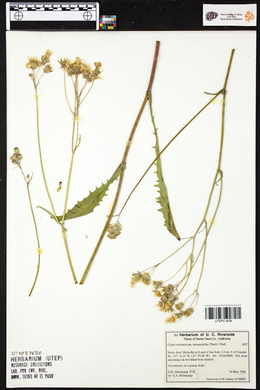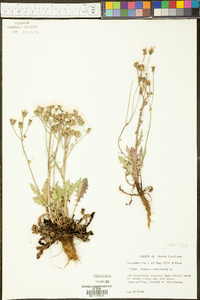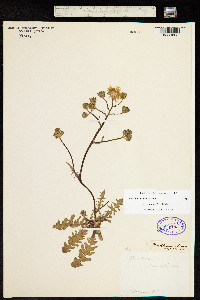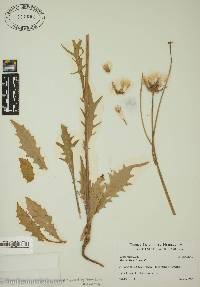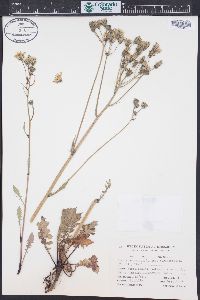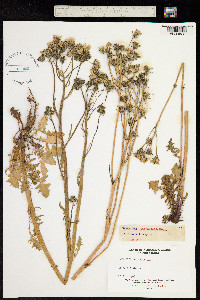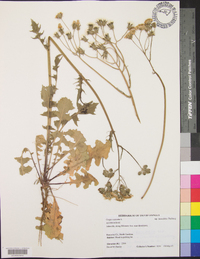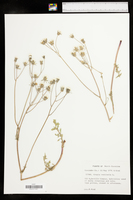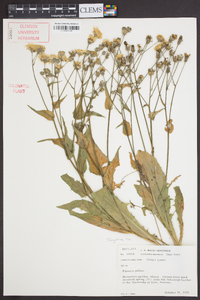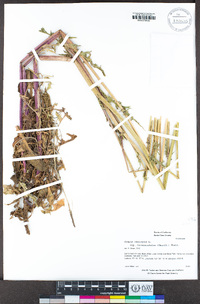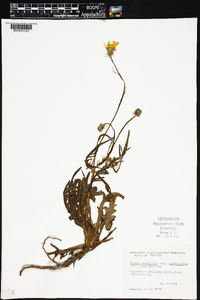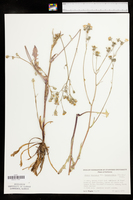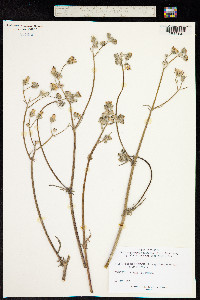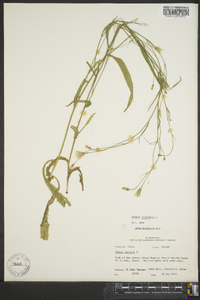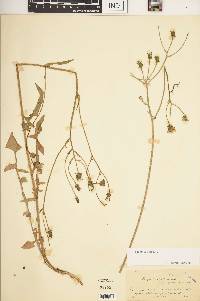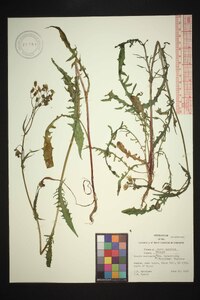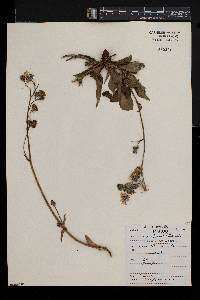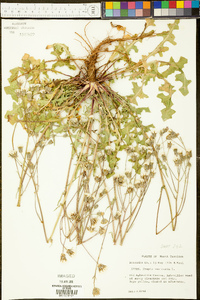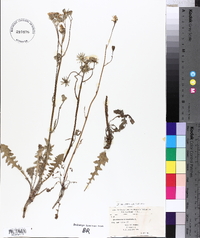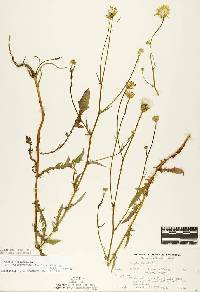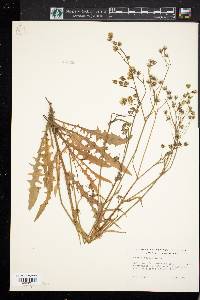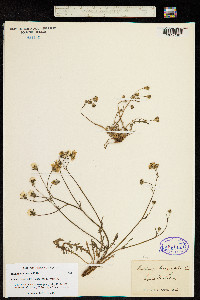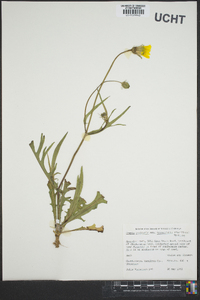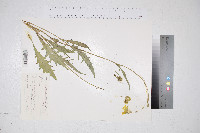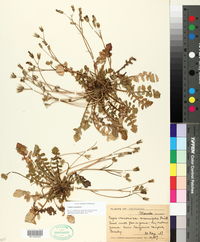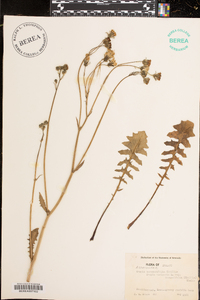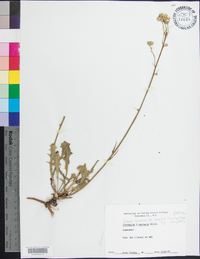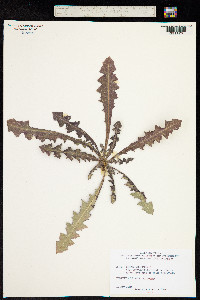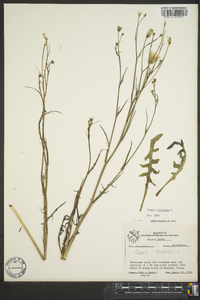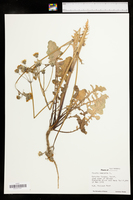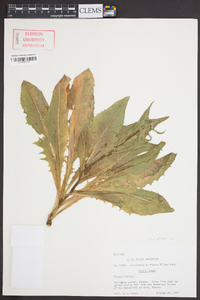
|
|
|
|
Family: Asteraceae
Beaked Hawk's-Beard
[Crepis vesicaria var. taraxicifolia (Thuill.) Thell., moreCrepis vesicaria var. vesicaris L.] |
Annuals, biennials, or perennials, 3-120 cm (taproots slender to thick, caudices swollen). Stems 1, erect to arcuate or decumbent (green or purple proximally), usually much branched, glabrate to hispid and/or tomentose, sometimes sparsely setose (setae black). Leaves basal and cauline; petiolate (bases clasping); blades oblanceolate to ovate, often runcinate, 10-35 × 2-8 cm, margins pinnately lobed to toothed (terminal lobes relatively large), apices obtuse or acute, faces usually hirsute (hairs sometimes only on veins) or glabrous (cauline sessile, bases auriculate, clasping, margins ± toothed). Heads 10-20, in lax, corymbiform arrays. Calyculi of 5-12, ovate to linear-lanceolate, glabrous bractlets 3-4 mm (reflexed in fruit, scarious). Involucres cylindro-campanulate (becoming turbinate or urceolate in fruit), 5-14 × 5-6 mm. Phyllaries 7-16, (reflexed at maturity) lanceolate, 10-12 mm, (margins green to yellowish), apices obtuse or acute (ciliate), abaxial faces tomentose and often stipitate-glandular, adaxial with fine, appressed hairs. Florets 50-70; corollas yellow (reddish abaxially), 6-15 mm. Cypselae (monomorphic or dimorphic) pale brown or yellowish, fusiform, 4-9 mm, outer wider with apices attenuate (not beaked), inner gradually tapered, beaked (beaks 2-5 mm, ± equal to bodies), ribs 10 (narrow); pappi white (fine, soft), 3-6 mm. 2n = 8, 16. Flowering Feb-Oct. Sandy clearings, hillsides; 0-300 m; introduced; B.C.; Calif., Conn., N.Y., N.C., Oreg., Pa.; Europe; introduced, South America. Native to the Mediterranean region of western Europe, Crepis vesicaria is recognized by its annual or biennial habit, pinnately lobed leaves, reflexed calyculi, tomentose and glandular phyllaries, and slender, long-beaked inner cypselae. It is polymorphic; subspecies are recognized in Europe. E. B. Babcock (1947) identified the North American plants as subsp. taraxaciflora (Thuiller) Thellung, which some Europeans (T. G. Tutin et al. 1964-1980, vol. 4) have listed as a synonym of subsp. haenseleri (Boissier ex de Candolle) P. D. Sell.
Annual, biennial, or occasionally short-lived perennial; stem 1-8 dm, purple near the base, ±hispid or tomentulose or both; lvs finely short-hairy on both sides, the basal to 20 נ4 cm, narrowly oblanceolate to spatulate or obovate, dentate to runcinate-pinnatifid or pectinately parted; cauline lvs progressively reduced, auriculate-clasping; heads several to ±numerous; invol 8-12 mm, its inner bracts 9-13, tomentose and often glandular, sometimes with some short black setae distally, becoming carinate-thickened in fr; outer bracts up to ca half as long as the inner; fls numerous; achenes pale brown, 4-5.9 mm, 10-ribbed, gradually attenuate into a slender beak equaling or a little longer than the body; 2n=8, 16. Fields and waste places; native of the Medit. region and w. Europe, sparingly intr. into e. U.S. s. to N.C. May-July. Amer. plants are ssp. taraxacifolia (Thuill.) Thell. Gleason, Henry A. & Cronquist, Arthur J. 1991. Manual of vascular plants of northeastern United States and adjacent Canada. lxxv + 910 pp. ©The New York Botanical Garden. All rights reserved. Used by permission. |
This project was made possible in part by the Institute of Museum and Library Services [MG-70-19-0057-19].
Powered by Symbiota



